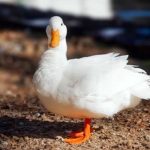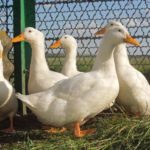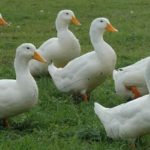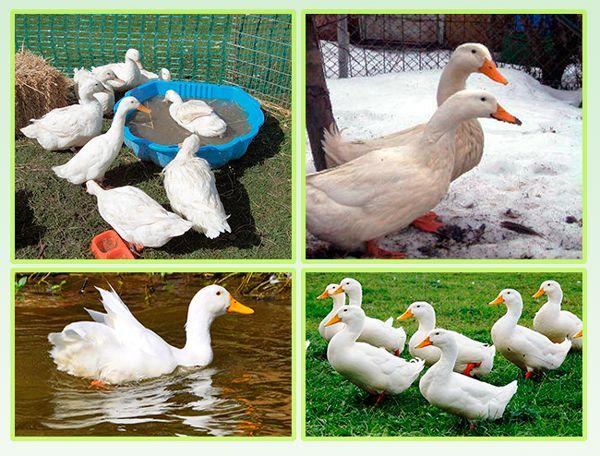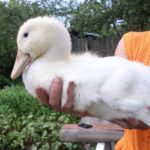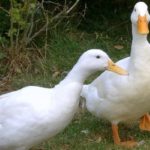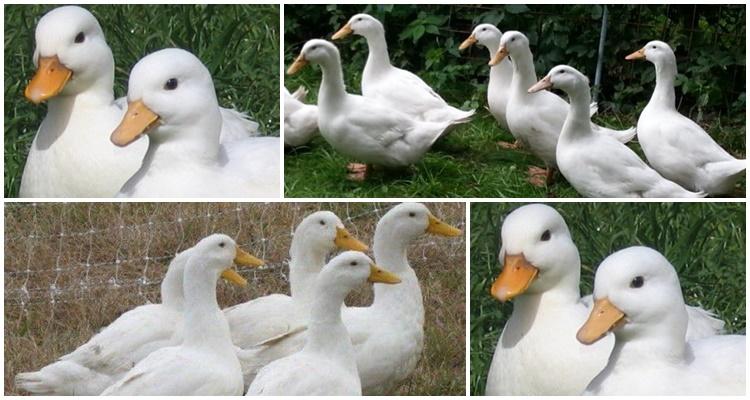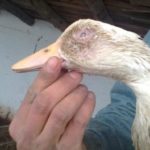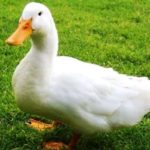Growing and breeding meat duck breeds is one of the profitable branches of poultry farming. Among the duck varieties, French ducks, bred from Peking and Muscovy ducks, stand out. Let's consider their origin, description and characteristics, pros and cons, breeding and growing features, how to create a diet, what diseases you may encounter and how to avoid them.
Origin
The Peking duck Orvia cross ST5 (ST5) was bred in France. This is a meat bird; the hybrid is used for industrial cultivation.The cross was obtained from 4 selected pure lines of the Peking breed. The improvement of the cross was carried out after 2004, and now the company supplies poultry to 4 continents. Ducks have typical broiler characteristics; they fatten up quickly, which is why they are valued by poultry farmers. Simultaneously with the Peking duck cross, the company developed Muscovy duck hybrids – the ST6 C and ST6 LC crosses.
Appearance and characteristics of the breed
The French duck looks like a meat bird - with a strong constitution, massive, dense, with large muscle mass, especially on the breast. Representatives of the cross grow quickly, reaching a weight of 3.5 kg in 42 days of cultivation, while spending 1.88 feed per 1 kg of weight gain. units The plumage of the CT5 is pure white, which allows you to also earn income from the sale of feathers.
Beijing's heavy line ducks are raised as broilers, both in industrial factories and in households.
The description of the breed states that ducks can also be kept as good layers - in 1 season from each duck you can get, on average, 296 eggs, weighing 88 g each. If you get ducklings on your farm, their survival rate is 96%.
Pros and cons of French ducks
Disadvantages of French duck crosses: you cannot get ducklings at home from your own ducks, as these are hybrids.
Requirements for maintenance and care
Despite the undemanding nature of French hybrids, you need to take responsibility for organizing their maintenance and care. Ducks raised for meat as broilers and as breeders should live in a spacious room. Each duck should have at least 0.5 square meters. m. area.
If birds are forced to live in crowded conditions, not only will they not perform to their potential, but they will also become sick.
The duck house for French ducks should be warm, light and dry. Dampness, stuffiness, cold or heat, drafts and air filled with ammonia are not acceptable. The floor of the duck room should be covered with a layer of moisture-absorbing material - straw, peat, hay chaff. It needs to be changed as soon as it becomes dirty. Dirty bedding causes the spread of infections and digestive diseases, causing the death of birds.
The temperature in the poultry house and humidity are from 20 to 30 ˚С and 60-70%. Lighting in summer is natural, in winter – artificial, lasting 10-12 hours. If the daylight hours are shorter, the laying hens will lay eggs worse. We must not forget about daily ventilation of the poultry house. The fresh air that ducks breathe keeps them healthy.
Like ducks of other breeds, French cross ducks should be allowed out for a walk - to a pond or a walking yard. Its area should be such that for each square. m. accounted for 1 bird. You can place a container on the site into which you can pour water for swimming. Ducks should spend at least 8 hours a day walking.
Diet
Like any breed or cross of meat and broiler production, French Orvia ducks are characterized by an accelerated metabolism. They eat a lot and often, absorb nutrients from food well, turning them into muscle mass, that is, into meat.You can achieve good results in feeding ducks only if you approach this issue with all responsibility. Birds, especially those fattened for meat, need to be fed at least 3 times a day, or even more often.
The diet consists of grass and grain foods. Ducks eat soft food and absorb nutrients better from wet mash or crumbly porridge than from dry grain. They, unlike chickens, do not digest whole grains well; they need to be given small cut grains and preferably boiled ones. Add grass cuttings, grated vegetables and root vegetables to mash or porridge, mix in chalk, salt, and premixes.
French ducks love to swim and do not mind visiting a pond. If there is water nearby, you can release the birds into the pond. In their natural environment they will find food, so you will hardly have to feed them.
Features of breeding and growing at home
You can get your own French cross ducklings only if you buy a hatching egg and hatch the ducklings in an incubator. The second option is to purchase young stock from breeding farms. Ducks are hybrid, so they cannot be bred like purebred ducks, producing generations of birds at home. With each new generation, the hybrid qualities will disappear.
Incubation of French duck eggs is the same as for other breeds. Further care for the chicks consists of placing them in a brooder and feeding them in it until they are one month old. If the ducklings are under a duck, then it and its offspring need to be transplanted separately for the same period of time.
Ducks of French selection are fattened for 1.5 months. By this age, as manufacturers promise, they will weigh up to 3 kg. Then the growth rate will decrease, but the appetite will increase. Ducks will eat more, but weight gain will slow down.Therefore, only those birds that will lay eggs can be kept for further maintenance.
Diseases and prevention from them
Subject to hygiene conditions and proper feeding, hybrids rarely get sick. They are characterized by health, endurance, and activity. But if you neglect the conditions of keeping, keep the bird in the dirt, do not walk it, feed it poorly or incorrectly, diseases will not slow down. French cross ducks suffer from infectious diseases and pathologies of the digestive system and metabolic diseases. This leads to deterioration in livestock productivity, slower weight gain and mortality of birds.
Prevention of infections and digestive diseases: regular cleaning of the poultry house, timely feeding, water changes, daily walks. As well as disinfection of premises and equipment.
French ducks, new hybrids of Peking and Muscovy ducks, have been bred for industrial use. But they can also be kept in the household. The technology of keeping and feeding, care and breeding is standard, so the poultry farmer should not have any difficulties. You can breed ducks for yourself or organize a small duck farm; crosses are suitable for organizing breeding for meat and making a profit.

